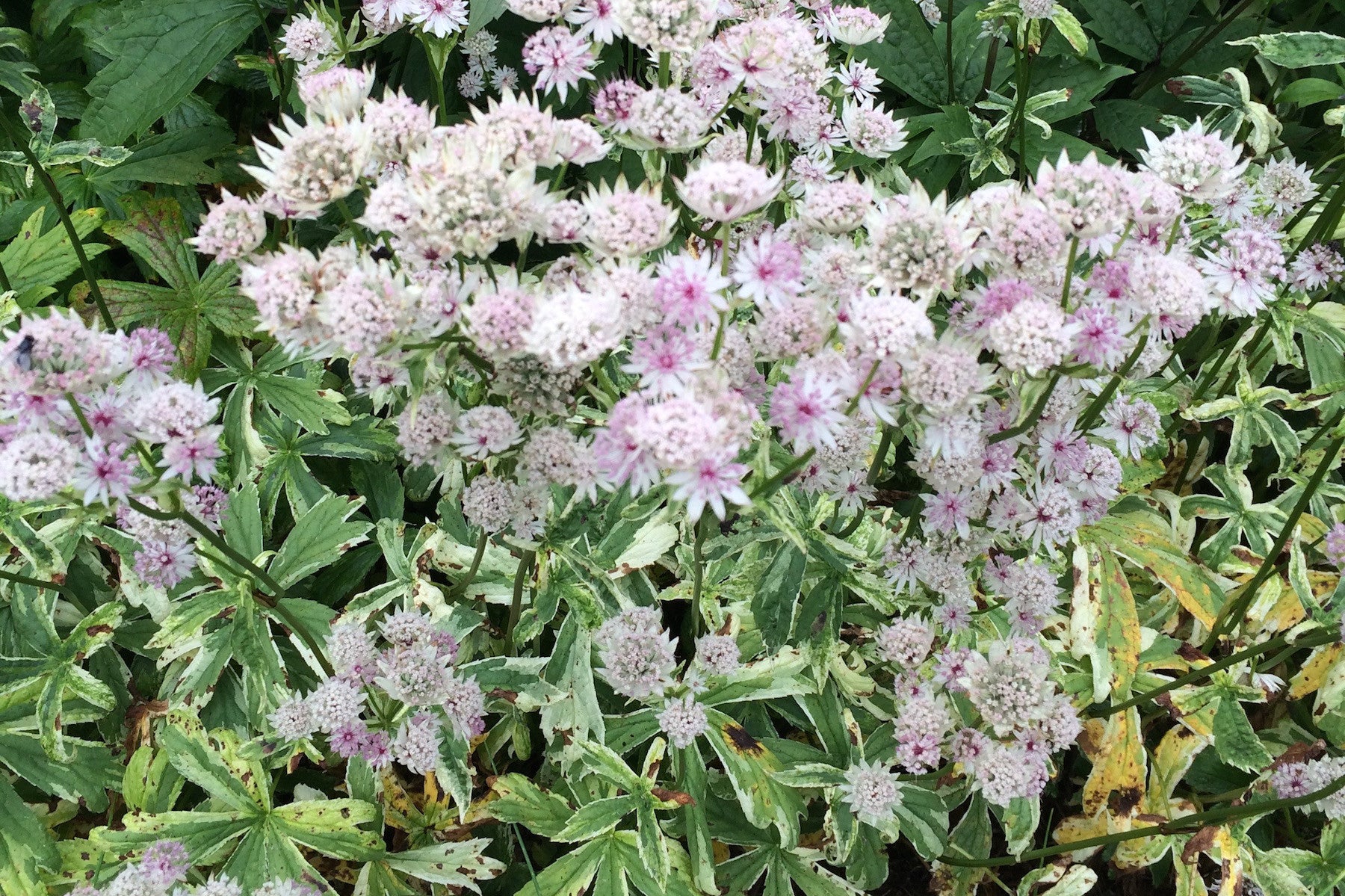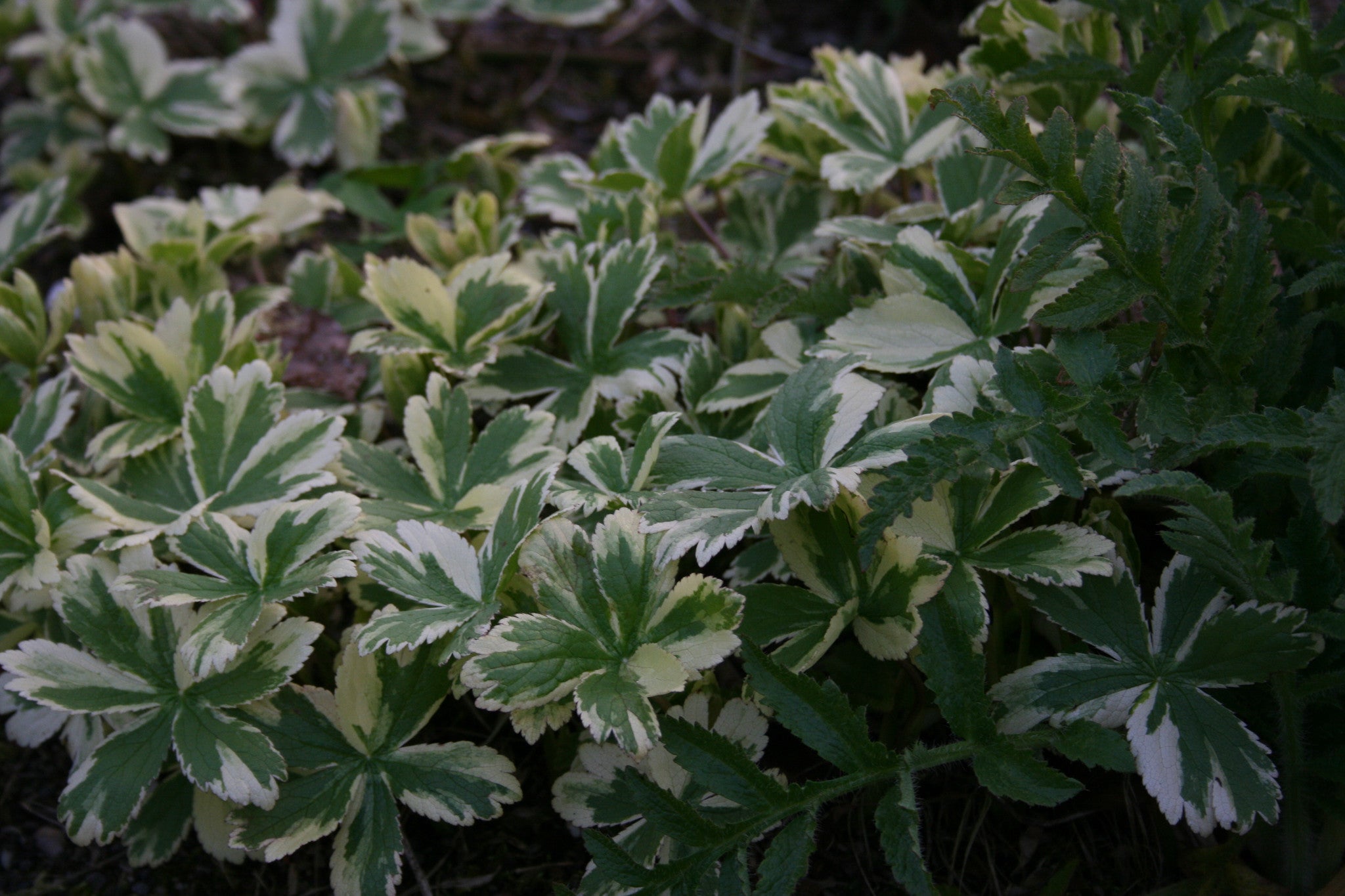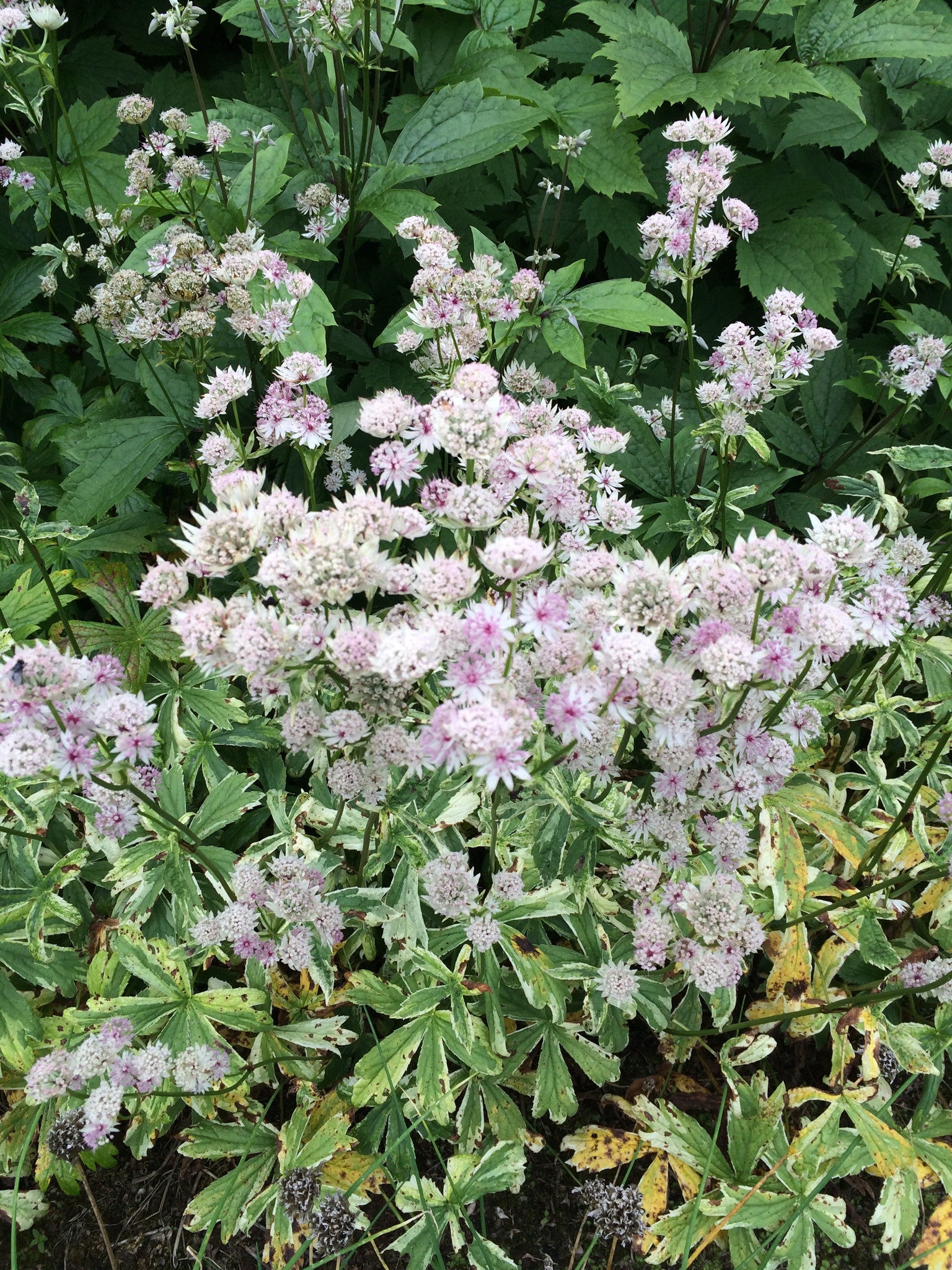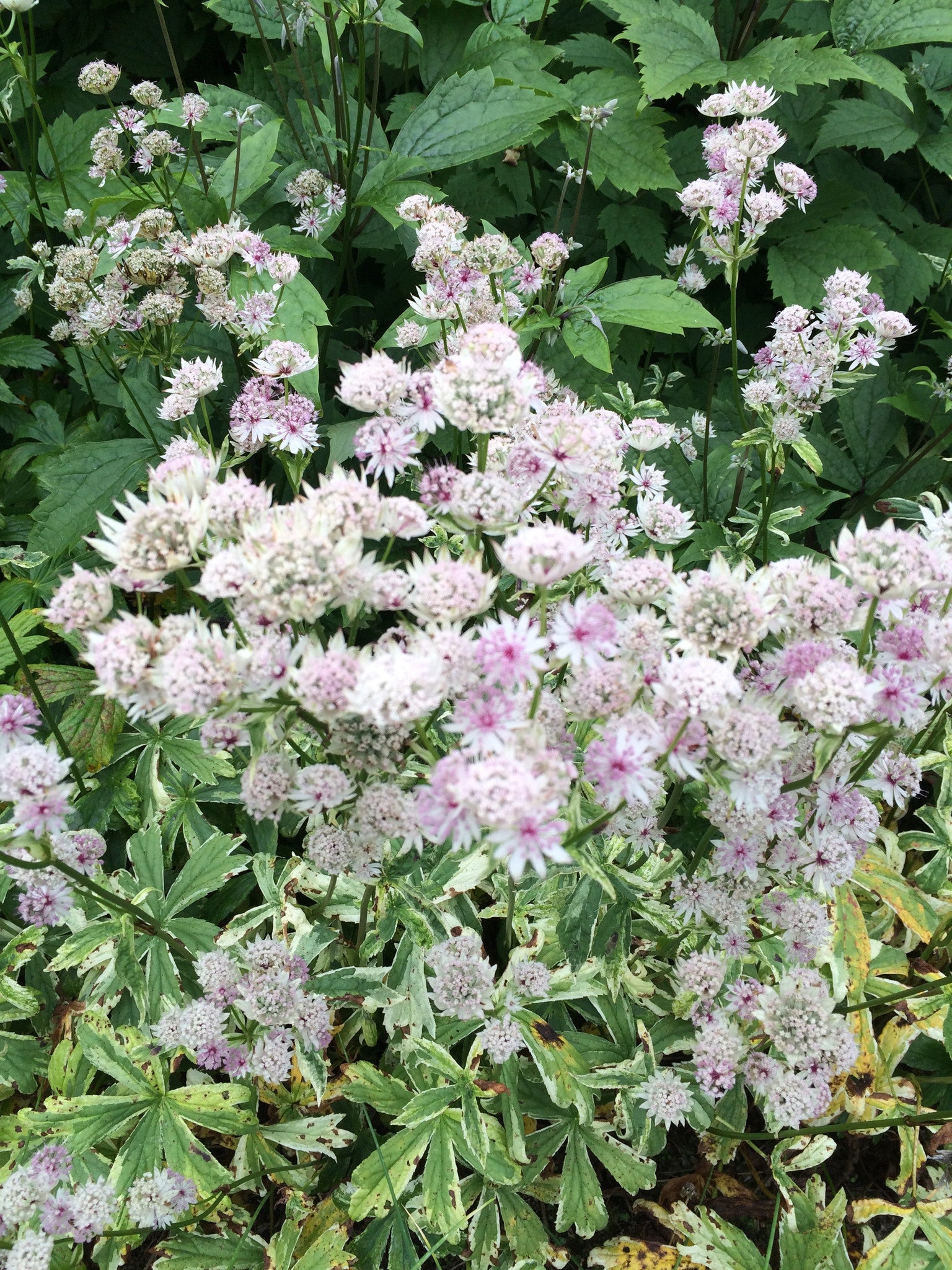Astrantia major 'Sunningdale Variegated'
Approx. 0.5 litre pot
About this cultivar:
Astrantia major 'Sunningdale Variegated' is a great masterwort cultivar that is noted for its attractive variegated foliage. Shorter than other Astrantia is only gets to about 2 feet tall. tall. Each flower head is pinkish-white. Bracts usually remain attractive well after bloom. Medium green leaves are splotched with cream and pale yellow. The variegated leaf colours can to fade as summer progresses - if you don't like it cut them back a bit and hope for more leaves. This is a great plant - I need to get a better photo!
Has the Royal Horticultural Society Award of Garden Merit.
Note: No-one ever buys this in our nursery because when young the variegated leaves look quite awful - almost diseased! But give it time and I think it looks fantastic when established (Paul)
- Position: Full sun, partial shade
- Soil: Almost any soil - grows well in Ballyrobert!
- Flowers: June, July, August, September
- Other features: Bees and Butterflies, Cut Flowers or Dried Flowers, Royal Horticultural Society Award of Garden Merit (RHS AGM), Interesting Foliage or Fruit
- Hardiness: Fully hardy - grows well in Ballyrobert!
- Habit: Clump forming, Bushy
- Foliage: Deciduous
- Height: 45 - 75 cm (1.5 - 2.5 ft)
- Spread: 45 - 75 cm (1.5 - 2.5 ft)
- Time to full growth: 2 to 5 years
- Plant type: Herbaceous Perennial
- Colour: White, pink, green
- Goes well with: Campanula lactiflora 'Pritchard's Variety', Salvia nemorosa 'Caradonna', Rosa, Geranium 'Sirak' (see photo)
About this genus:
Astrantia is an upright herbaceous perennial that is probably our favorite plant in the garden at Ballyrobert. We find that nearly every Astrantia cultivar grows well in nearly every soil and situation; from shade to sun, from dry to wet, from clay to sand! They look great in sun when buzzing with insects but they can also be used in some troublesome part-shade areas. When the flowers die back they dry out very quickly, go light brown, and stay upright - this gives wonderful structure if you decide not to cut them back. This makes a wonderful cut or dried flower, hence the prevalence in the industry.
Sometimes this Genus is known as Masterwort or Hatties pincushion. The Genus name comes from a Greek word 'astron' meaning star in reference to the flower head shape or from magistrantia (derived from the Latin word 'magister' meaning master or teacher).








